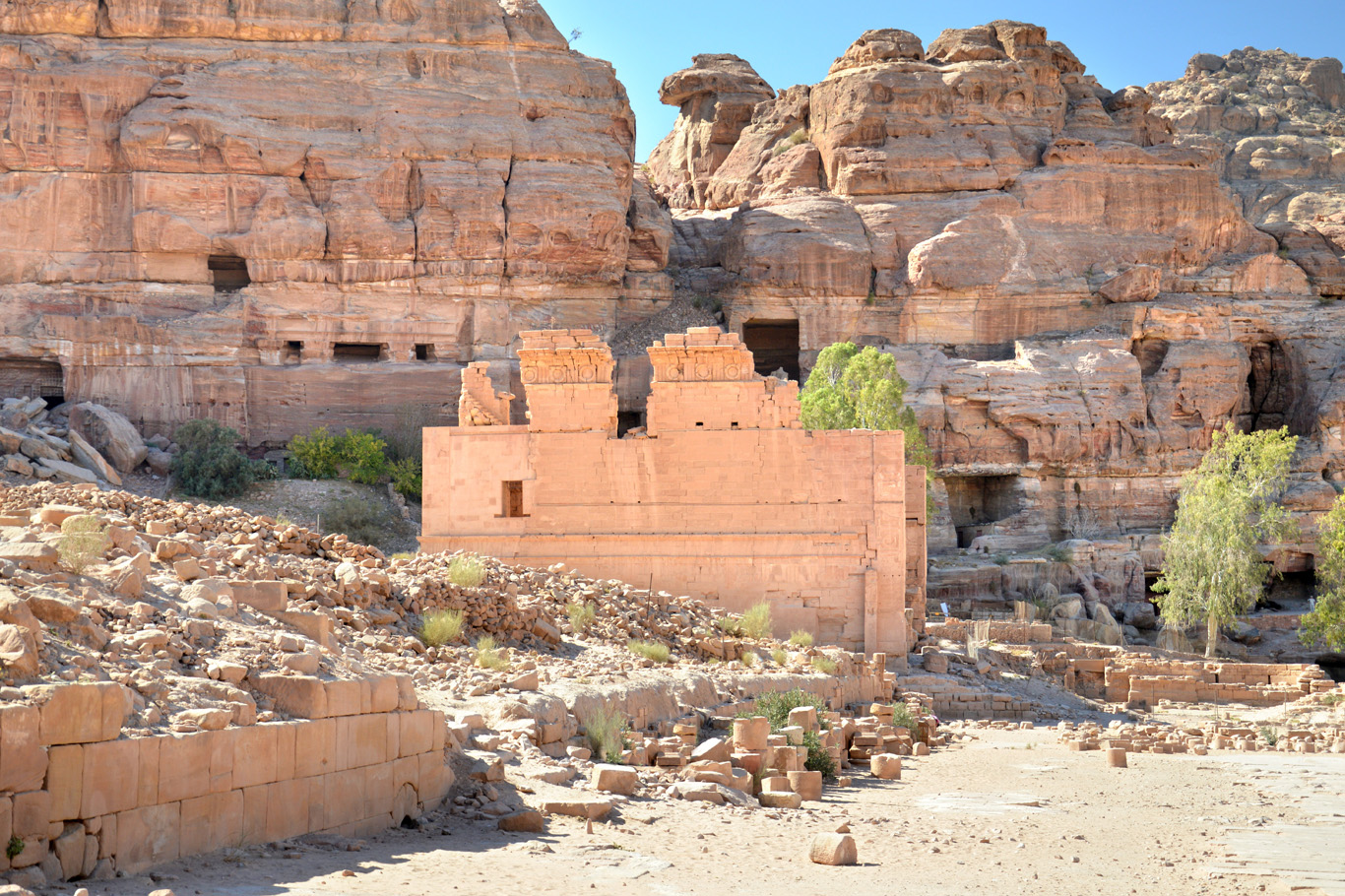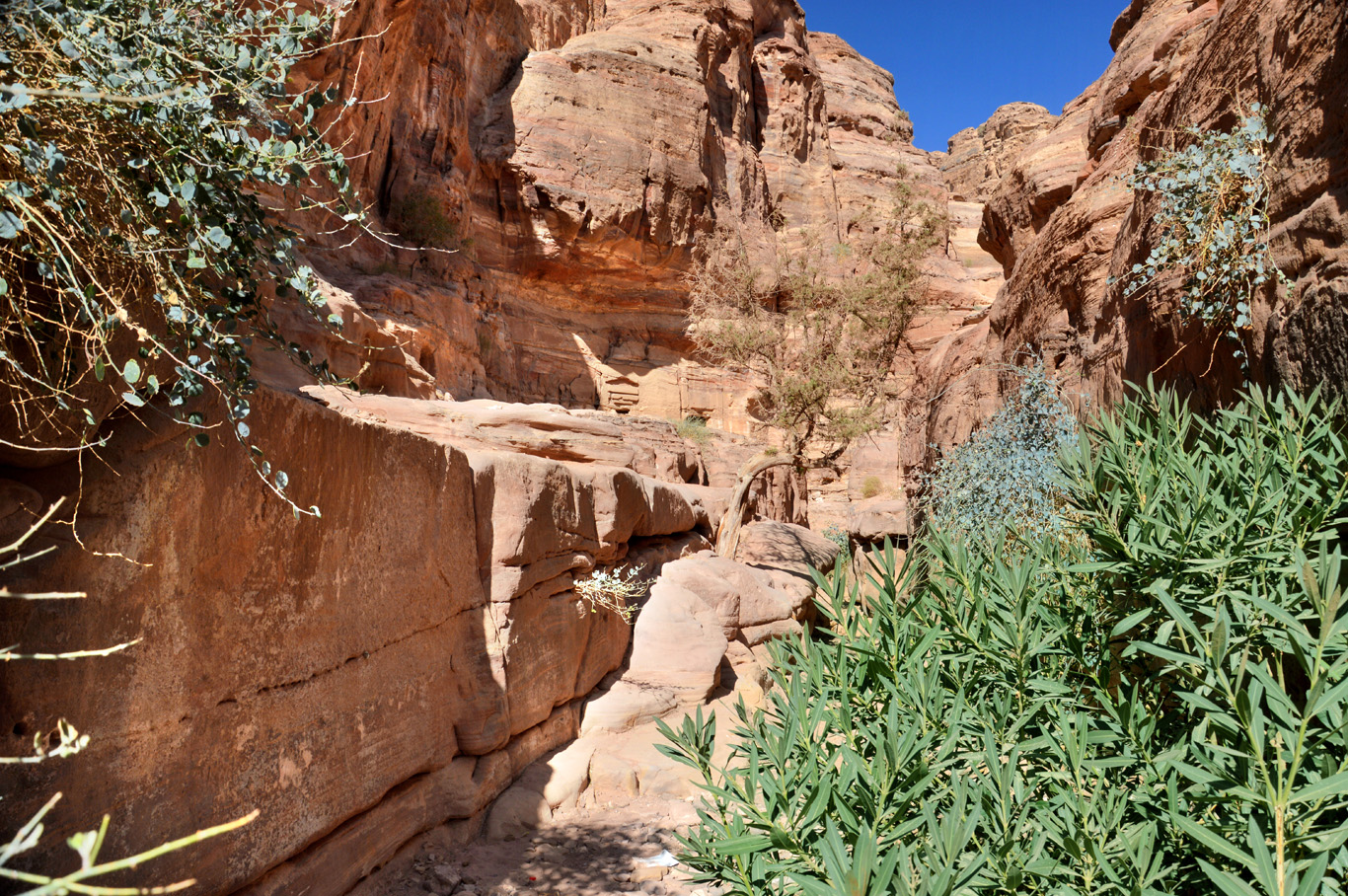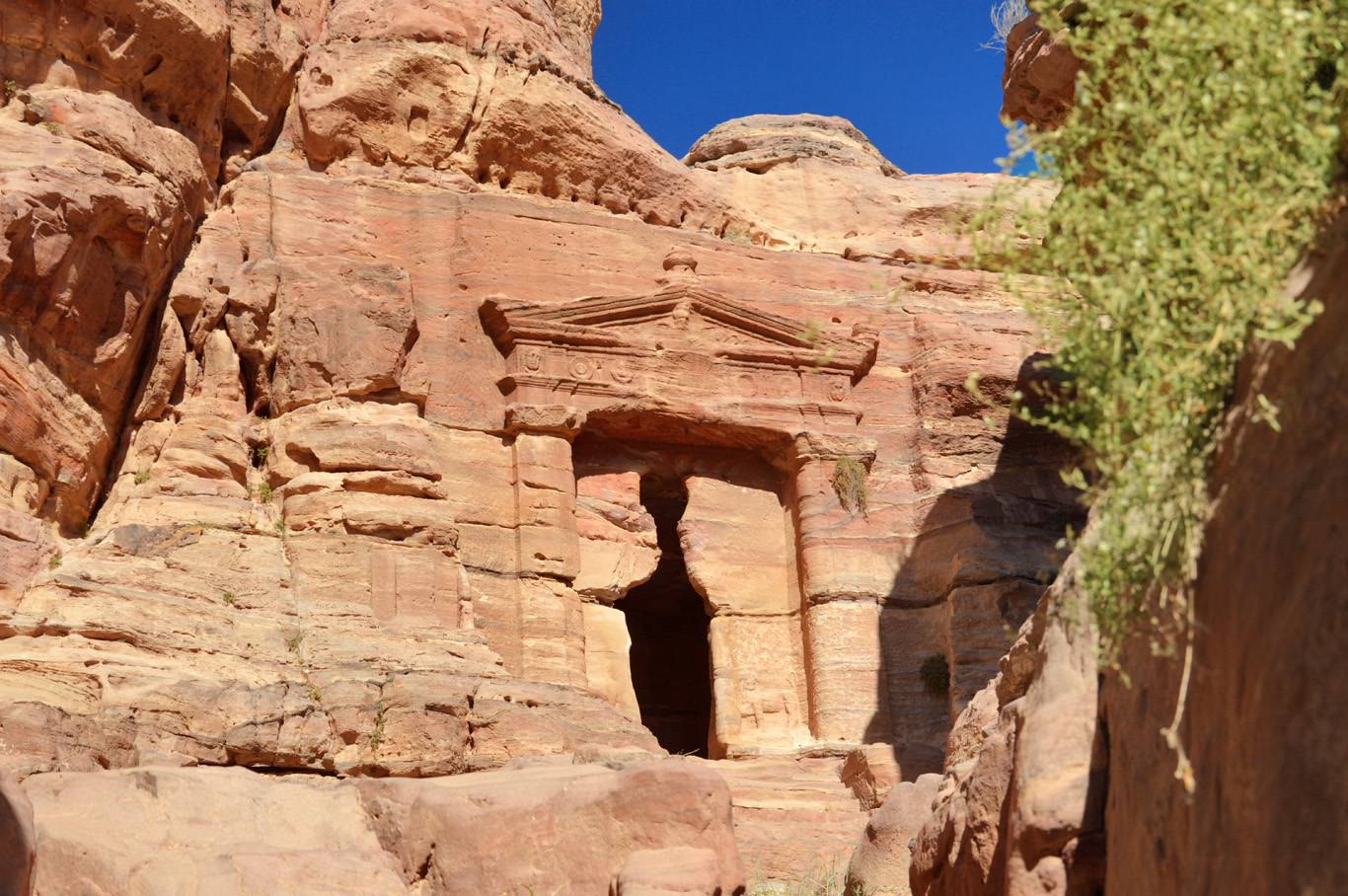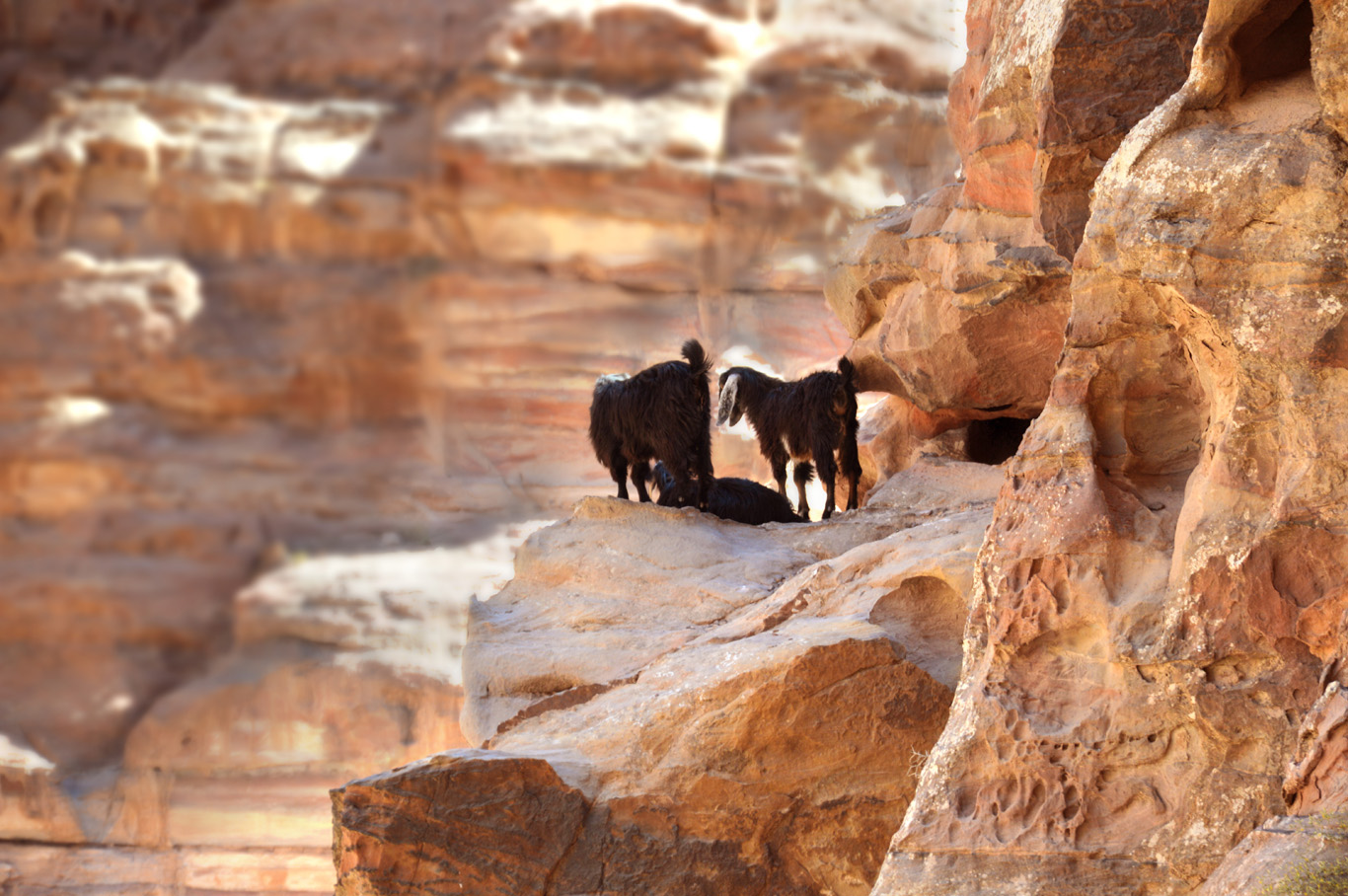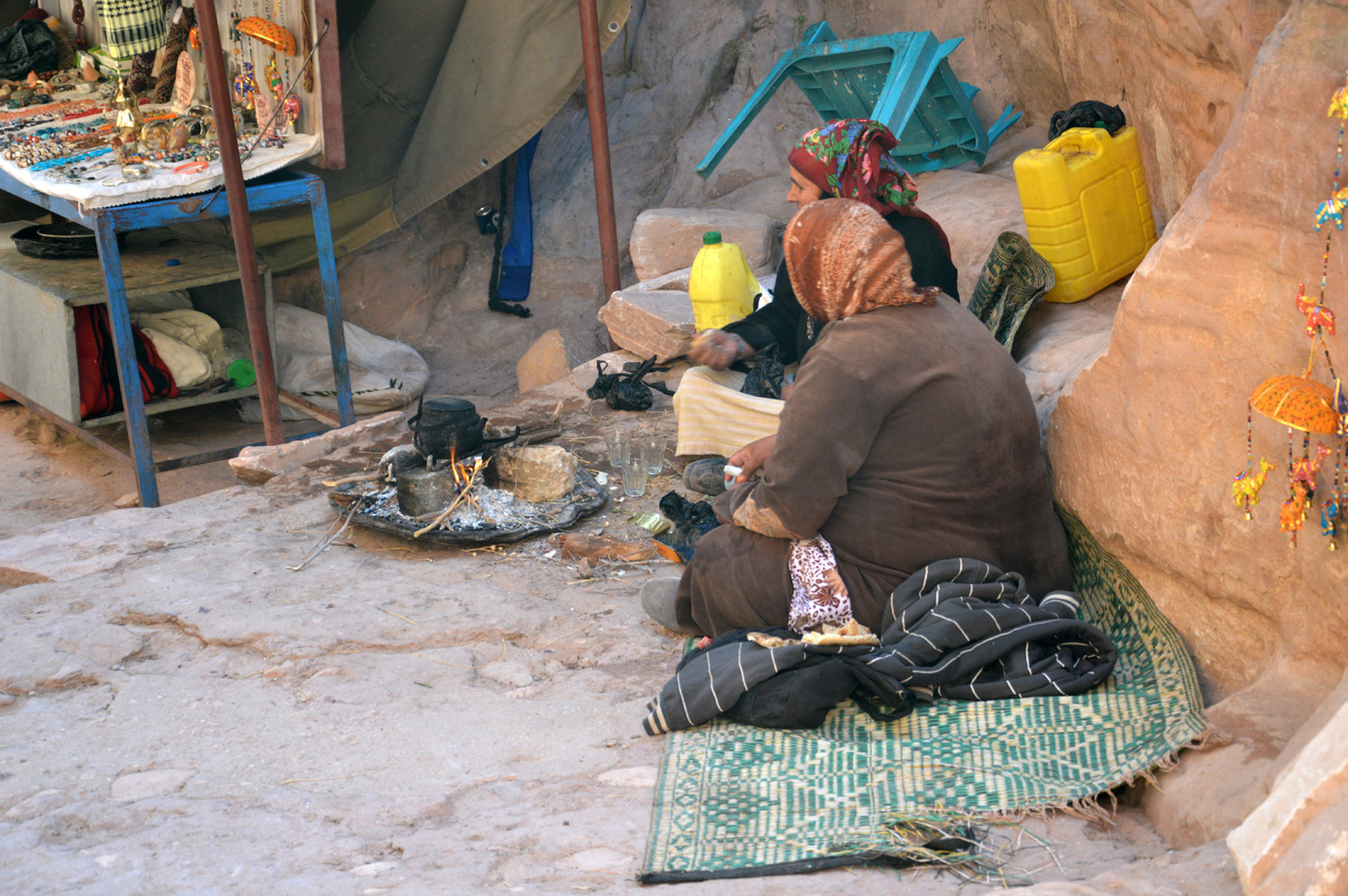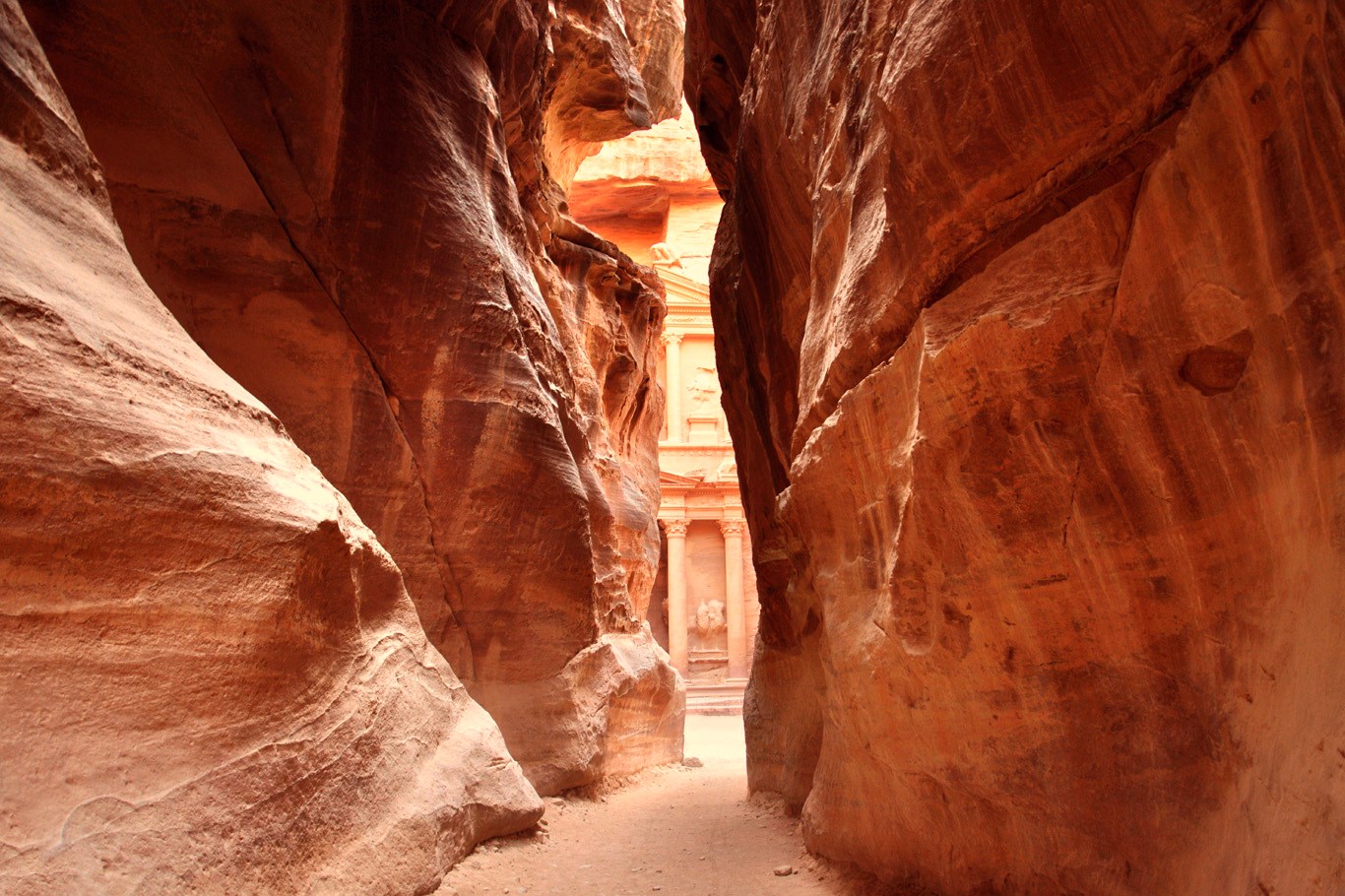As I mentioned in the first part, the ancient rock city of Petra has so much more to offer than the most popular monument - the Treasury. Around the Treasury, you can admire other, unique to the Nabataean style enormous structures carved in the rose rock and the short but steep trail to the High Place of Sacrifice. In this part I will describe all the rest - The Roman part of Petra with its impressive Colonnaded Street, the most important Nabataean Temple Qasr al-Bint and the extraordinarily attractive trail to the carved from the rock wall Monastery (Ad-Deir) located on top of the nearby hill. Besides the spectacular Monastery, the whole site also boasts unreal views over the Martian mountainous desert.
If you wish to know how to reach Petra, whether it is safe for an ordinary tourist or about the fees and how to visit it from the very beginning, have a look at the first part: The Treasury, The Ancient Rock City and The High Place of Sacrifice Trail.
<<< Back to Part 1
Petra under Roman rules
The Romans came to the region in the 1st century AD and what is rare in history, coexisted peacefully with the locals. From then on Petra had two main centers - Nabataean (near the Treasury) and Roman - a bit further, past the carved in rock tombs. The city flourished under the Roman rules - it became the main trade center in the region. Its location within the walls of the surrounding gorge helped to keep it safe from invasions. Only after the Syrian city of Palmyra gained importance in the area and "stole" the high position of Petra in ancient trade - the Nabataean rock city declined. Then, the earthquakes and Arab takeover over came to the region - as a result, last inhabitants abandoned Petra in the 6th century. For centuries, it was literally unknown - functioning merely as a "legend city".
Romans left the beautiful legacy of their advanced culture in Petra - the long and impressive Colonnaded Street. Although almost completely damaged, you can imagine how great it was during the times of its glory. Along the ancient road you will notice archaeologists excavating the ground - many parts of Petra are still undiscovered.
Qasr al-Bint Temple
Colonnaded street starts at the end of the Nabataean center and leads straight to one of the main Nabataeans Temples - Qasr al-Bint. The structure is one of the few that were actually built rather than carved in rock. It is relatively well preserved - even some parts of the ceiling arches stand intact to this day. The temple was completed aroound 30 BC using golden sandstone blocks. It has been speculated that it was the largest worship site for the Nabataeans. In Roman times, Qasr al-Bint was adapted to other Roman Temples and dedicated probably to Apollo, although this is not certain.
Roman ruins in Petra
Roman ruins
Colonnaded Street (Nabataean tombs carved into rock in the background)
The colorful layers of the rock in Petra
Qasr al-Bint Temple seen from Colonnaded Street
Qasr al-Bint Temple
Qasr al-Bint Temple - the arch is preserved
On top of the Qasr al-Bint Temple
Archaeological excavations
The Trail to the Monastery (Ad-Deir)
Near the Qasr al-Bint Temple you'll find some restaurants - be careful with raw food (like salads) - I got a pretty bad stomachache after having had lunch in one of them.
This is the place where the trail starts. You'll meet some donkey riders there who will encourage you to take their "taxi" to the Monastery and warn you that you're about to climb around 800 steps up the extremely difficult trail to the top of the mountain.
It's not true - the trail is a bit tiring but quite easy. And the views! You'll forget about any tiredness in an instance! If you have experience in hiking, you'll be more than fine. Don't forget to bring water with you as it might get hot. It took around 1 hour for us to reach the top. The views are indescribable - the hues and shapes of rock formations are absolutely stunning.
On the way, we saw the donkeys carrying lazy tourists, some people were clearly overweight and too big for the poor animals that could barely walk breathing heavily. It was a pretty painful sight. The animals are not treated well, and it's best if you don't use them - just walk yourself. On the other hand, the donkey rides might be the only source of income for their owners - so the moral dispute here is quite difficult to resolve.
The Monastery (Ad-Deir)
The Monastery, although carved with a little fewer details, is larger than the Treasury (45 meters/148 ft. tall) but not less attractive. It was completed in the 1st century AD in a typical Nabataean style. When you stand close to it, it seems enormous. Simply breathtaking. Photos will not reflect the real grandeur of this ancient monument.
What came as a surprise to me was how few tourists (in comparisons to the crowds in front of the Treasury) actually got to the top! I guess it's the same situation with all the popular spots - people go there just take a photo and don't care what's around. Don't make this mistake! Within a short walk from the main attraction you can often discover something beautiful and unique, without hundreds of tourists and stands with cheap plastic souvenirs.
The hill itself is very attractive too. The rugged mountainous views over the surrounding desert are amazing. There are some locals here with simple stalls where you can buy some snacks and traditional tea. To attract those few brave tourists who actually have made it to the Monastery to go even higher, there are signs pointing to where you can see "more than the best view". Walk around and immerse yourself in unforgettable beauty of nature!
How long to stay in Petra
Many people come to see Petra from Israel for a day trip and they basically see just the Treasury and the old Nabataean center. This is not enough! Jordan should be visited as a destination country itself. Also, the entry fee to Petra goes down almost twice when you are staying overnight in Jordan. I have described the fees in the section "How to get to Petra" in the first part.
Me and my friends visited Petra in 1 day, starting early in the morning and finishing at the sunset. We didn't use any horse carts, donkey taxis etc. During that one day we managed to see all the attractions mentioned in both parts: The Treasury, The Nabataean Center, The High Place of Sacrafice Trail, The Roman Center, The Qasr al-Bint Temple and The Trail to The Monastery.
If you want to do it at a slower pace, 2 days should be enough for peaceful hiking. I've seen some comments on tripadvisor.com that you would need as many as 4 days to see everything. But for me, that would be the case only if you are extremely interested in history of each and every tomb and monument. If you are a simple backpacker and are not afraid of sweating and hiking, then 2 days is more than enough in my opinion.
At the start of the trail
Steps up - more than 800!
Little green oasis on the way
Carved in rock temples and tombs can be found everywhere
Donkeys at work
Rocks like a piece of a caramel cake
Wild goats
You can try some original tea along the way
Almost there...
Donkey having some rest
The top of the Monastery can be visible - not so impressive from this side
With the view of the canyon
The Monastery - in comparison to a tourist
The interior of the Monastery is very plain
Original teapots
Rocky desert around
The Monastery
Jordanian flag in front of the Monastery
Different colors of the rocks
The desert
Donkeys having some rest at the sign pointing back to Petra
Views are getting better and better!
Related Posts
Copying without permission is not allowed. If you wish to use any of the site's content (photos or text) or work with us, please contact us.
We welcome questions, advice, support or criticism. However, spam comments will be removed.






